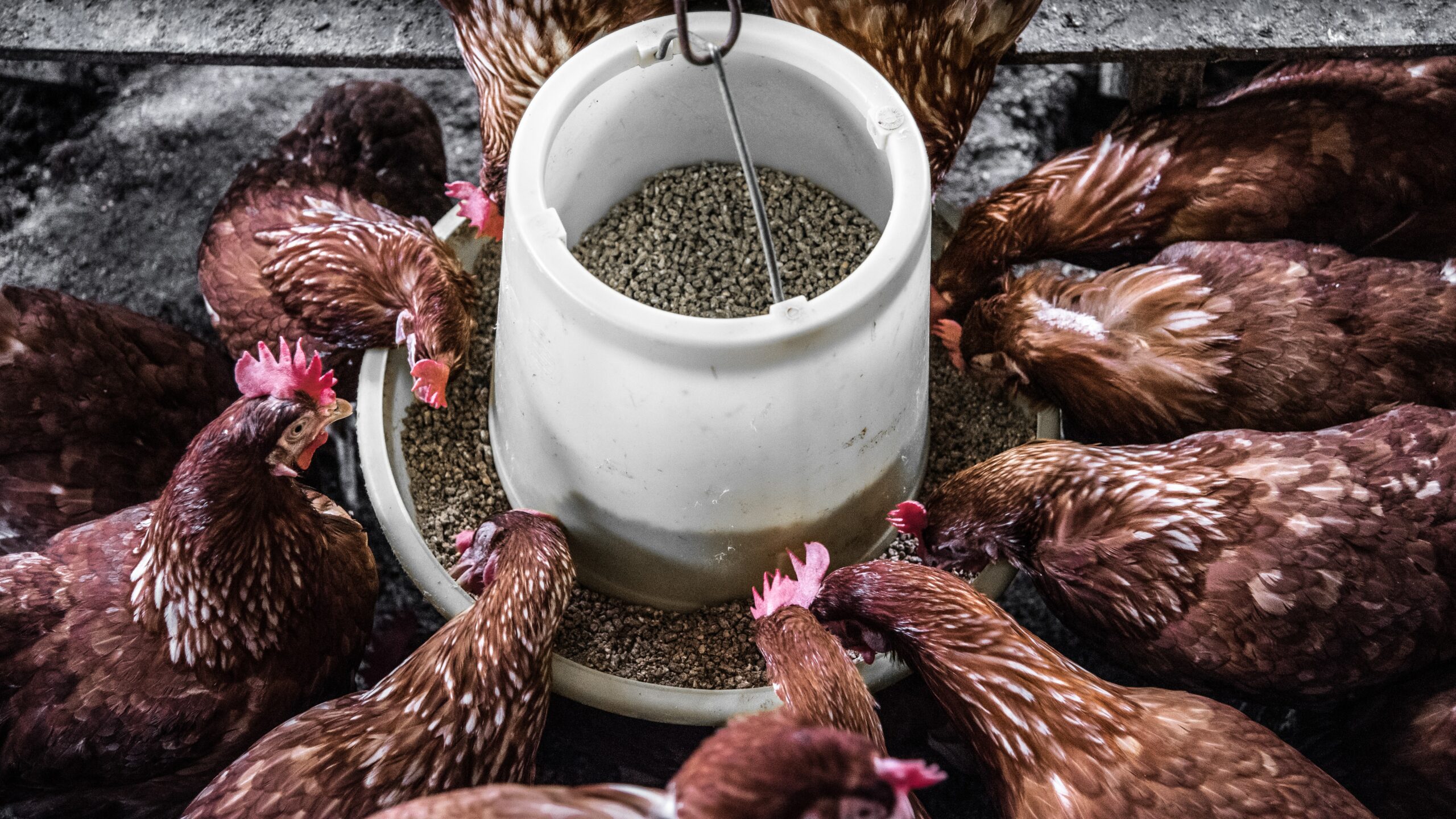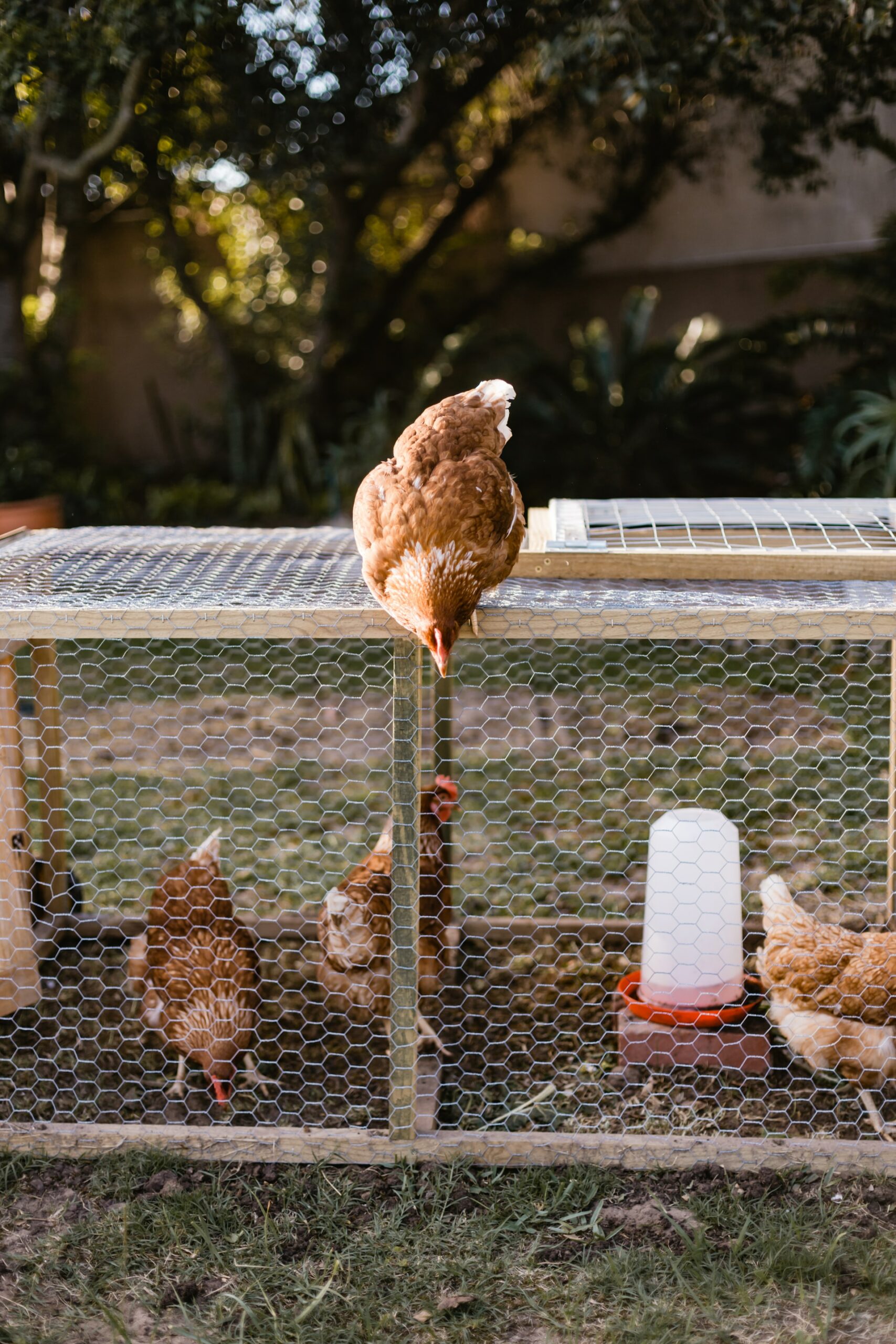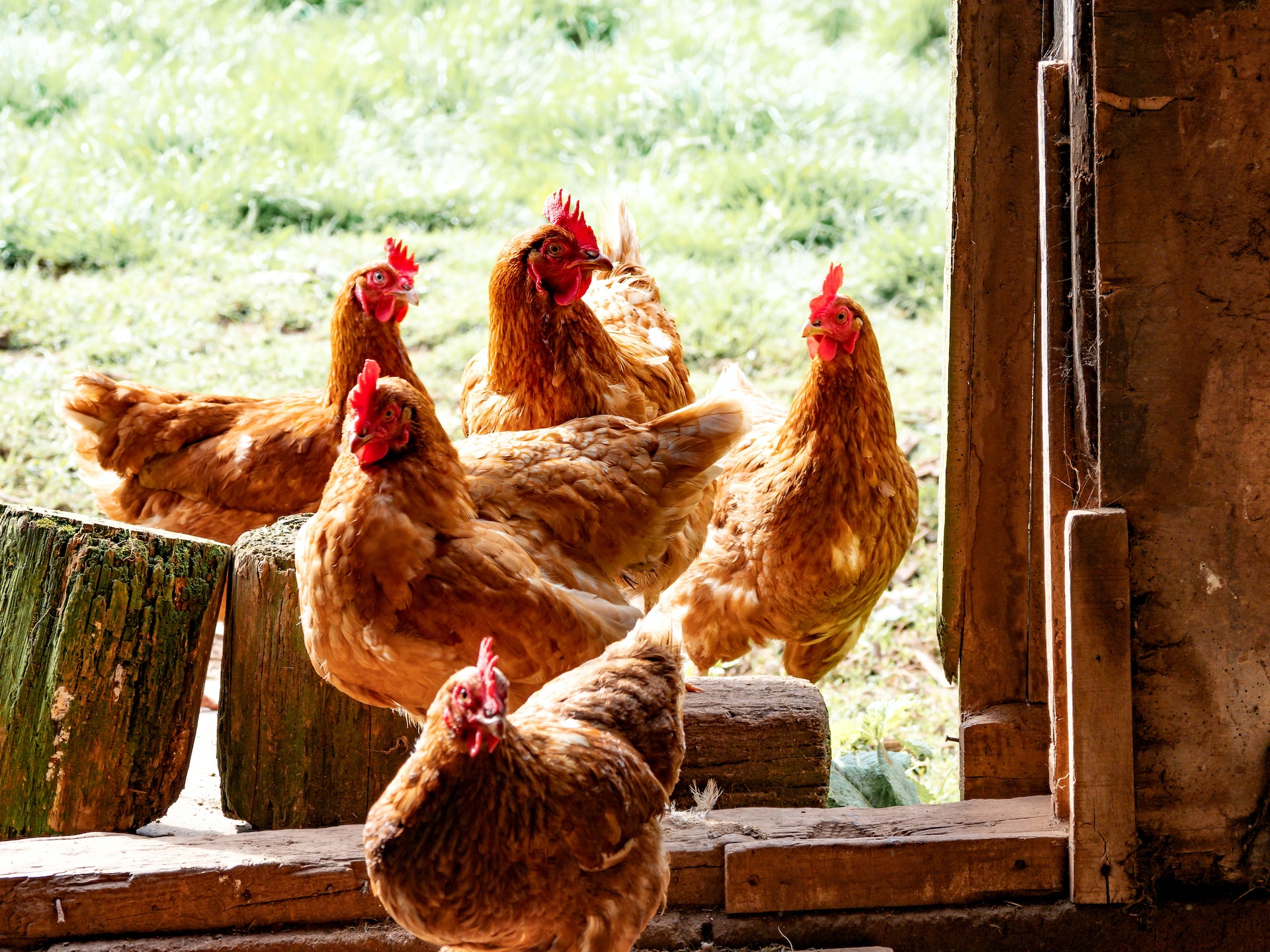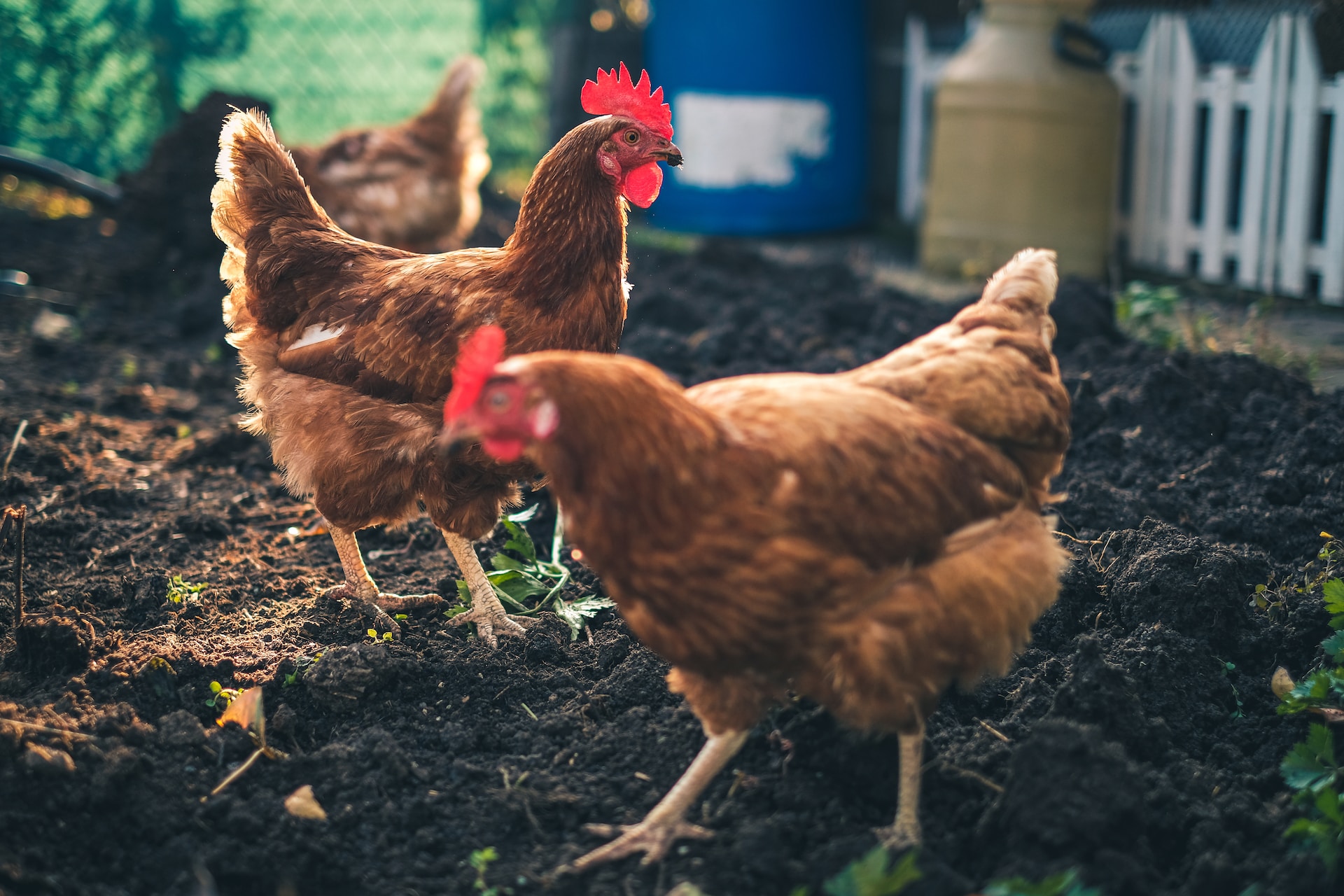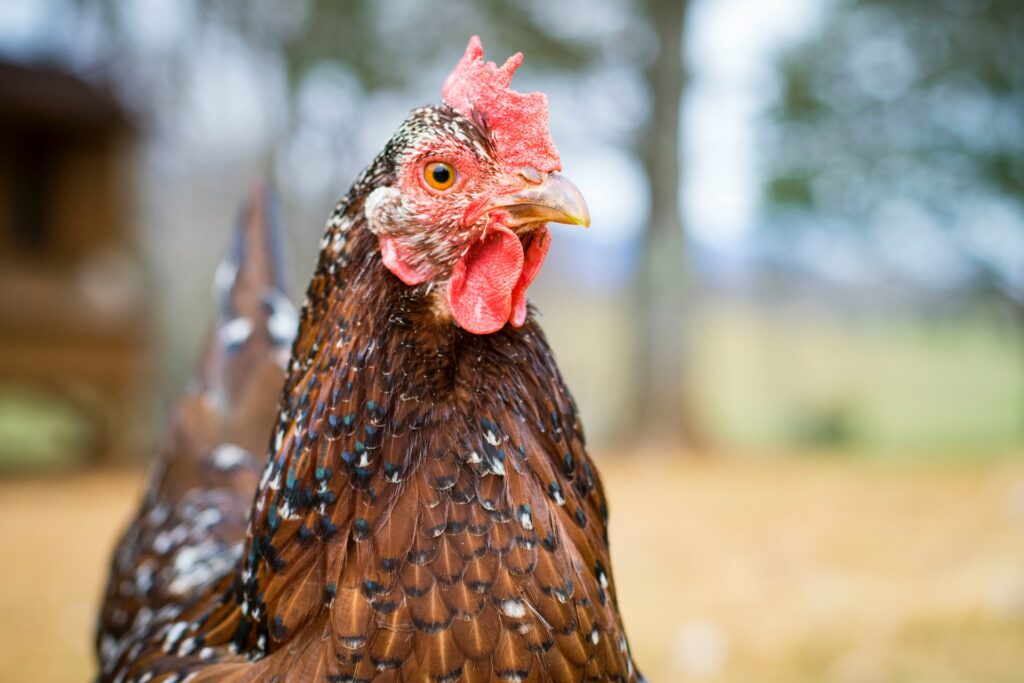My Hen Is Eating Eggs! What Do I Do?
You’ve had your chicken flock for about a year, and everything’s been going well. Out of the blue, you seem to be collecting fewer eggs from the nesting boxes every day. You’ve gone from five eggs per day down to one or two, and you don’t know why – none of your hens look broody, and you can’t find a hidden stash of eggs anywhere. You’ve ruled out predators as the cause, so what’s going on?
Then, one day, you peek in the nesting box to see one of your hens having a free “snack.” You have an egg-eating hen! Many of us depend on our chickens’ eggs for healthy sustenance or a source of income, so having an egg eater in the flock – even if you haven’t confirmed the behavior yet – can have a huge impact.
Many chicken keepers stand by the one tried-and-true cure for an egg eater: to rehome them or process them. However, it doesn’t have to be that way. There are a lot of methods you can use to break this bad habit before you resort to that, and they do work – we tell you this from experience.
In this post, we’ll go over all of the issues that can lead to egg-eating behaviors – as well as how to stop a hen from eating eggs. We’ve tried most of these methods ourselves, and for those we haven’t tried, we have firsthand accounts from friends, family, and acquaintances on their effectiveness.
Issue 1: Food
If you’re stuck asking yourself, “Why is my hen eating eggs?” you’re not alone. This behavior often starts without a clear explanation of why, but chickens are simple creatures. The reason behind it is usually equally simple. If your hens don’t feel like they’re getting enough food, it stands to reason that they’ll start looking for whatever’s available – and that includes eggs.
This issue is easy to put a stop to as long as it hasn’t progressed too far. Just give your chickens more food! If you have to, you can invest in a larger feeder (or an additional one, if your current size is maxed out), or just fill it more frequently. Don’t ever let it run completely empty!
Alternatively – and especially if you keep a flock that forages for most of their food – try providing them with extra time or space to free-range. Given the time and inclination, many chickens will go out and search for bugs, seeds, and other readily available snacks on their own, but they can’t do that if they’re confined to a chicken coop.
If you’re looking for a safe and easy way to introduce your chickens to free-ranging, I highly recommend Premier 1’s line of electrified poultry netting and fencing options. They’re incredibly easy to set up, easy to move to fresh pasture, and very effective at deterring grounded predators. I’ve heard glowing reviews across all of my chicken communities for this product.
If you can’t free-range your hens, another thing you can do to keep them full and happy is provide them with food scraps. We’re constantly feeding our chickens old bread, bruised fruit, and other undesirable foods, and they love it! It’s a great way to increase their meal sizes while keeping your feed bill low, and it cuts down on food waste, too.
It’s very rare for laying chickens to overeat or become overweight, so you shouldn’t need to worry about overfeeding them. Don’t overfeed to the point of attracting unwanted pests or predators, though, especially if you’re feeding scraps from your kitchen. Just give them enough scraps for them to eat within a day, and don’t give more until they finish the previous serving.
Issue 2: Nutrition
If you’ve ever asked, “Why do laying hens eat their eggs?” in a social media group, the answer you’ll hear most is nutritional deficiency. We love eggs because they’re nutritionally dense: full of protein, healthy fats, and much more. Plus, the shells are full of calcium and other minerals that your hens need. If they’re not getting enough of those nutrients through their diet, it stands to reason that they’ll go searching for them in the next most convenient place: their eggs.
If you don’t already, try offering extra oyster shell to your hens, either free-choice or sprinkled on top of their regular food. In our experience, this isn’t usually the cause of the egg-eating hen’s issues, since layer feeds are well-formulated to fit the needs of most laying hens. Having some oyster shell available for the hens who do need it is never a bad idea, though.
Issue 3: Boredom
If your hens are “cooped up” all day every, they’re going to end up bored. If you were locked in your house with nothing but food, wouldn’t YOU eventually get pretty stir-crazy?
Of course, the ideal setup for your chickens is acres of land to hunt for bugs, seeds, and other tasty snacks, but the majority of us don’t – or can’t – offer them that! Their only alternative is to “hunt” their own eggs! The question is, how do we offset that boredom and offer them enrichment while keeping them safe? How do you stop a hen from eating eggs out of boredom if she has nothing else to do all day?
One way we tackle this issue is with chicken “toys” – especially feeders that challenge their ability to get to a delicious snack. We love the enrichment options available from Omlet, one of our favorite chicken coop companies. We have both a Poppy Peck Toy and a Caddi Treat Holder for our chickens, and both of them provide hours of interest for the flock. (The Caddi Treat Holder perfectly suits seed and suet cakes like the Farmer’s Helper Forage Cake, and the Poppy Peck Toy works best with loose scratch grain.)
You don’t have to provide enrichment through food, though, and you don’t have to buy them anything to provide enrichment, either. We’ve seen fellow chicken owners create a cheap and easy “toy” by simply suspending a head of lettuce from a string. In theory, you could do this with lots of other vegetables, too, like zucchini, squash, cabbage, and more. We’ve also heard that chicken swings can provide endless entertainment for hens and their owners.
If all else fails, something as simple as throwing a handful of scratch grains into their run can keep your chickens occupied for a surprisingly long time. If you have a large enough run, you can also try adding large rocks or boards to it and leaving them there for a while. Flip them over occasionally to give your chickens a free all-you-can-eat buffet! A mobile chicken tractor that can relocate to fresh grass also provides a lot of easy enrichment for your chickens, since they’ll scratch for greens and creepy crawlies as soon as they have access to them.
If you don’t have a favorite nursery for plants and trees yet, I highly recommend adding Nature Hills to that list. Nature Hills Nursery is America’s largest online nursery, and the company’s quality speaks for itself. While they specialize in outdoor perennials, like bushes and trees, they sell a few varieties of houseplants, too.
Personally, I’m a huge fan of Nature Hills’ fruit bushes and trees, but their ornamentals are just as gorgeous. Their site is extremely easy to navigate, and each product page tells you the most important info about the plant in question, including which USDA zones they thrive in.
Now, let me amend this by saying that Nature Hills may not always be the cheapest place to buy perennials, but their prices are reasonable. They’re also a fantastic resource for rare varieties, and they offer special deals throughout the year that can save you a lot! As I write this, Nature Hills is offering a 2-for-1 sale on certain plant varieties, making it a great time to invest in those rare plants you’ve been searching for. Reviews also mention the great quality of Nature Hills’ plants, so if you’ve had trouble getting trees and shrubs to take off after planting in the past, you might consider giving them a try.
Issue 4: Accessibility
Why do hens eat their eggs? One surprising answer can actually be your chicken coop’s design. We’ve found that if hens have too much access to their nesting boxes, they tend to go more often to look for eggs to snack on. We like to keep at least two degrees of separation between our chickens and their nesting boxes.
In practice, this means that your chicken coop should have at least three distinct areas: the run, the shelter, and the nesting boxes. (If your chickens free-range, you can count that as the “run.”)
If your chickens only have a shelter and nesting boxes – especially if they can easily see the nesting boxes while they’re inside the shelter – that’s not enough separation. However, if they’re out in the run keeping themselves occupied, the chances are that they can’t see the nesting boxes (and, as such, won’t be as likely to consider stopping in for a snack).
If you can’t relocate your chickens away from your nesting boxes (or vice versa), there’s one more thing you can do to simulate that extra degree of separation: roll-away nesting boxes. This is a virtually fool-proof way to break a hen from eating eggs, since any eggs laid will roll into a chicken-proof drawer out of reach.
Of course, this method only works if your hens lay in the nesting box, so it isn’t 100% perfect. However, for the eggs that do make it to the nest box, it’s extremely effective.
Issue 5: Habit
Keep in mind that once a hen has started eating eggs, she can resume at any time. An egg-eating hen can also teach egg-eating to the other members of your flock. However, we’ve found that as long as you stick to the tips in this guide and stay consistent with your countermeasures, the chance that she’ll spread her habit is very small (and the chance that she’ll stop is very high).
Another tool to get a hen to stop eating eggs is a set of dummy eggs. We use ceramic eggs in our own flocks. Some people use white golf balls instead since they look similar enough to a real egg! When your problem hen goes in to look for a snack, she’ll instead find the dummy egg. Since the dummy egg won’t break and has nothing of value inside, she’ll eventually get discouraged and lose interest.
If all of the above methods fail, one final trick you can use to dissuade your problem hen – as long as you know which one’s the problem – is an item called Pinless Peepers. Pinless Peepers were designed to keep aggressive hens from pecking each other, and they still work for that purpose (as well as a few bonus uses). We’ve found that a good pair of peepers can make it hard for a problem hen to eat eggs, mostly because she can no longer see her “prize.”
Note: a lot of people don’t like Pinless Peepers because they consider them cruel. Please make sure to choose the correct size for your chickens when purchasing; if you buy peepers that are too small for your chickens, they can indeed cause problems. Even in the correct size, they’re probably not the most comfortable thing in the world to wear. However, they’re leagues better than having to process or rehome a problem chicken because of bad behavior, so we do feel that they have an important role in some flocks. (Just don’t use them if you free-range your chickens.)
On a weirdly related note, we’ve seen a lot of people in chicken circles recommending a hollowed-out egg filled with mustard. We can’t recommend this method any less – while the smell certainly could be discouraging to your hens, the method is so labor-intensive and strange that it leaves us questioning why it’s a thing. Just grab a golf ball, if you have one, or buy a set of dummy eggs if you have to – it’s so much easier and accomplishes the same thing. Plus, the dummy eggs/golf balls last forever, while the mustard eggs are single-use.
How Do I Tell Which Hen Is Eating Eggs?
One of the hardest parts of breaking an egg eating habit, depending on the method you use, can be finding the guilty hen (or hens). Most of the fixes we recommend in this guide work on all of your hens, eliminating the need to find the one responsible. However, if you decide to rehome or process the guilty hen, or if you want to try pinless peepers, you’re gonna have to find out who’s responsible.
There are several ways to do this. One – look for evidence of the crime. Your egg-eating hen should have yolk on her beak, face, and head feathers after she does the deed. It’ll be crusty and yellowish-orange, depending on the color of your yolks.
Two – install a trail cam or other camera to record the crime in progress. This works great if your hens are all different breeds, but if you have a few hens of the same breed, it might be difficult to tell them apart on camera.
Three – create a trap egg. This is a method we’ve seen on social media, but haven’t tried ourselves. Hollow out an egg so you have an empty shell, then fill it with food coloring. Do not use red food coloring for this – we recommend using blue or green. The egg-eating hen should be easily identifiable after she breaks the dye-filled egg.
There are other things you can try, so don’t hesitate to do your own research, but these are the best we’ve found.
Final Thoughts
Have you ever run into issues with an egg-eating hen? People in our chicken circles tend to recommend processing or rehoming egg eaters right away, but we think this is jumping the gun. There are a lot of ways to prevent and dissuade this behavior, and addressing the cause of the behavior is an easy and effective way to keep your hens from doing it again. Why would you rid yourself of a good layer, or a hen that’s special to you or your family, when the problem is so easy to fix?
Have you tried any of the fixes we’ve recommended on how to stop laying hens eating their own eggs? If so, how did they work for you? Feel free to send us messages with your stories!
This article may contain affiliate links and advertisements. If you make an online purchase after clicking one of the links in this article, we may receive a commission. As an Amazon Associate, Little Onion Farm earns from qualifying purchases. All of the logos, photographs, banners, and links in this post are the intellectual property of their respective owners, and are used to promote our affiliate partnerships. Thank you for supporting Little Onion Farm and our partners!
Copyright © 2025 Little Onion Farm – All Rights Reserved.
